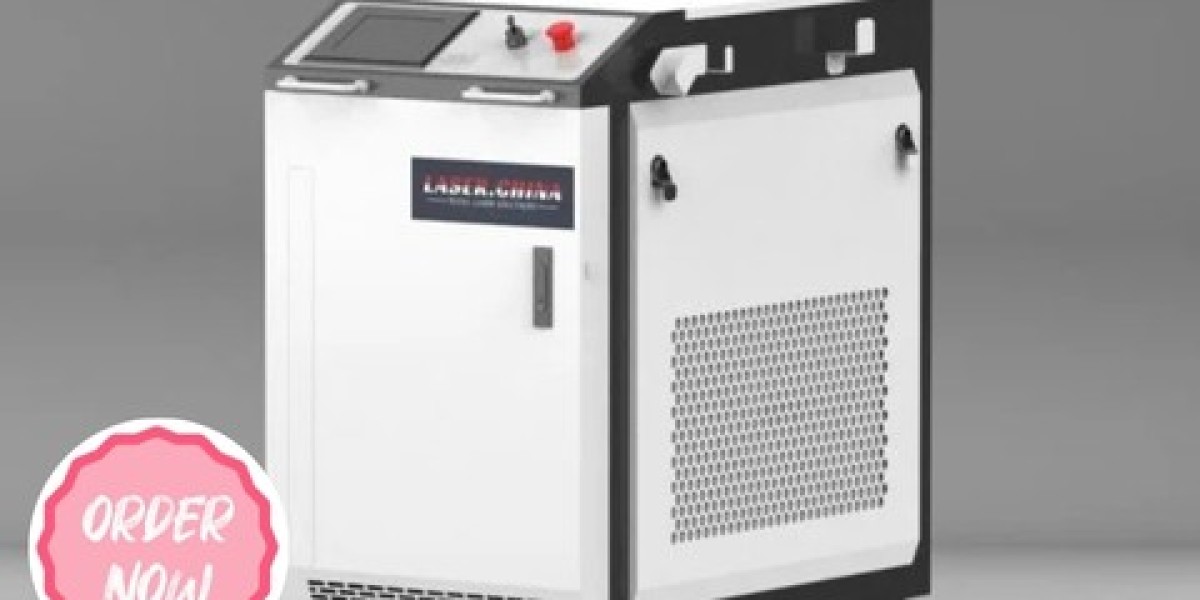An Industrial Laser Cleaner is not just a cleaning tool—it represents a shift toward smarter, cleaner, and more environmentally responsible operations. From removing rust and paint to preparing surfaces for welding and coating, this technology has rapidly become an essential component in industries where surface quality defines product integrity.
The Science Behind Industrial Laser Cleaner Technology
At the core of an Industrial Laser Cleaner lies the principle of laser ablation. This process uses a high-energy laser beam to target unwanted contaminants—such as rust, paint, grease, or oxides—without damaging the underlying material. When the laser beam hits the surface, it absorbs the contamination layer and converts it into plasma or vapor, which is then removed instantly.
What makes this process so remarkable is its precision. The laser’s parameters—such as wavelength, pulse duration, and intensity—can be finely tuned depending on the material type and thickness of the contamination layer. This allows for complete control, ensuring the substrate remains untouched while the unwanted layer is efficiently eliminated.
This high level of control has positioned Industrial Laser Cleaner systems as a reliable and repeatable solution for tasks that once required hazardous chemicals or labor-intensive methods.
Why Industries Are Adopting Industrial Laser Cleaner Systems
Across manufacturing sectors, the transition toward laser cleaning is evident. Factories that once relied on sandblasting, solvent washing, or abrasive grinding now prefer laser-based systems due to their accuracy and consistent performance.
In automotive manufacturing, laser cleaners are widely used for preparing metal surfaces before welding or painting, ensuring optimal adhesion and strength. Aerospace companies rely on them to clean delicate components without altering tolerances or introducing micro-abrasions. In the energy sector, they help restore turbines, pipelines, and metallic structures exposed to harsh environmental conditions.
Even cultural heritage conservation has embraced the Industrial Laser Cleaner. Restorers use it to delicately clean centuries-old sculptures and monuments, removing accumulated pollutants without damaging the original material.
The versatility of this technology demonstrates its adaptability—from micro-level cleaning of intricate components to large-scale surface preparation in shipyards or steel plants.
The Role of Industrial Laser Cleaner in Sustainable Manufacturing
Sustainability is no longer an option—it’s a necessity. Industrial processes must meet both performance and environmental goals. Traditional cleaning methods often involve chemicals that produce toxic waste or abrasives that degrade surface integrity. The Industrial Laser Cleaner, however, eliminates these concerns entirely.
Laser cleaning is a dry, contactless process that generates no secondary waste. There are no chemicals to dispose of, no water consumption, and no contaminated residues. This makes it a perfect fit for industries pursuing eco-friendly certifications and cleaner production processes.
Moreover, because laser cleaning reduces the need for consumables such as sand, chemicals, or brushes, it minimizes recurring costs and material waste. Over time, it supports a circular economy model—where resources are optimized and environmental footprints are minimized.
Efficiency and Precision in Modern Production Lines
Production downtime and quality control are major concerns in any manufacturing environment. The Industrial Laser Cleaner addresses both. Its integration into automated systems allows continuous operation with minimal supervision. Robotic arms or CNC setups can be fitted with laser cleaning heads, enabling repeatable, consistent cleaning across multiple parts with uniform quality.
This automation capability not only boosts throughput but also reduces human exposure to potentially harmful materials or environments. Maintenance operations that once required manual scraping or chemical handling can now be executed safely and remotely.
Furthermore, the precision of a laser beam ensures uniform cleaning depth and accuracy, even on complex geometries or sensitive materials. The repeatability of results makes it ideal for industries where surface integrity directly affects performance—such as electronics, automotive, or aerospace.
Industrial Applications Across Sectors
The Industrial Laser Cleaner is now a mainstay in multiple sectors due to its adaptability and reliability. Some prominent examples include:
Automotive Manufacturing: Used for cleaning weld seams, removing paint before re-coating, and degreasing parts before assembly.
Aerospace Industry: For removing oxides from turbine blades and aluminum components, maintaining tight tolerances.
Electronics and Precision Engineering: For delicate cleaning of molds, tools, and microelectronic components.
Oil and Gas Industry: For removing corrosion, coatings, or residues from metal pipes, valves, and tanks.
Shipbuilding and Marine Maintenance: For large-scale rust and biofouling removal on metal hulls and decks.
Cultural Heritage Restoration: For preserving historic structures and artworks by removing pollutants without surface abrasion.
Each of these fields values the non-contact nature of laser cleaning and its ability to deliver consistent results without surface degradation or the use of consumables.
Economic and Operational Perspective
While the initial investment in an Industrial Laser Cleaner can appear significant, the long-term economic perspective tells a different story. The elimination of consumables, reduced labor dependency, and minimal maintenance translate to substantial savings over time.
Downtime reduction also adds measurable value. Machines equipped with laser cleaning technology operate more efficiently and require less frequent shutdowns for maintenance. As a result, productivity increases while operational costs decrease.
From a strategic standpoint, companies that integrate laser cleaning into their processes often gain a competitive advantage—offering cleaner, more reliable products while maintaining eco-compliance.
Safety and Compliance
Safety in industrial settings is paramount. The Industrial Laser Cleaner is engineered with operator safety in mind. Systems typically include enclosures, fume extraction units, and laser shielding to protect workers from radiation and debris.
Because no hazardous chemicals are used, there are fewer health risks related to chemical burns, toxic vapors, or waste handling. Additionally, most systems comply with international safety standards for laser operation, ensuring safe implementation in workshops and automated production lines.
Future Outlook of Industrial Laser Cleaning
The advancement of laser technology continues to open new possibilities. As power efficiency, portability, and automation integration improve, the Industrial Laser Cleaner is becoming more accessible to businesses of all sizes.
Emerging sectors such as renewable energy, medical device manufacturing, and microelectronics are already beginning to leverage this technology. With increasing focus on clean manufacturing and precision-based operations, the demand for laser cleaning systems is expected to grow significantly in the coming decade.
Innovations such as fiber lasers, real-time process monitoring, and adaptive beam control will further refine cleaning performance, making this technology even more indispensable for next-generation production systems.
Final Thoughts
The Industrial Laser Cleaner has transformed from a niche innovation into a core industrial tool. It symbolizes the fusion of technology, sustainability, and precision—addressing the challenges of modern production without compromising on quality or environmental responsibility.
From heavy manufacturing to delicate restoration, this system offers a new level of control and reliability that traditional cleaning methods can no longer match. As industries continue to evolve, embracing cleaner, smarter, and more efficient technologies, the Industrial Laser Cleaner stands as a definitive choice for the future of surface treatment.







